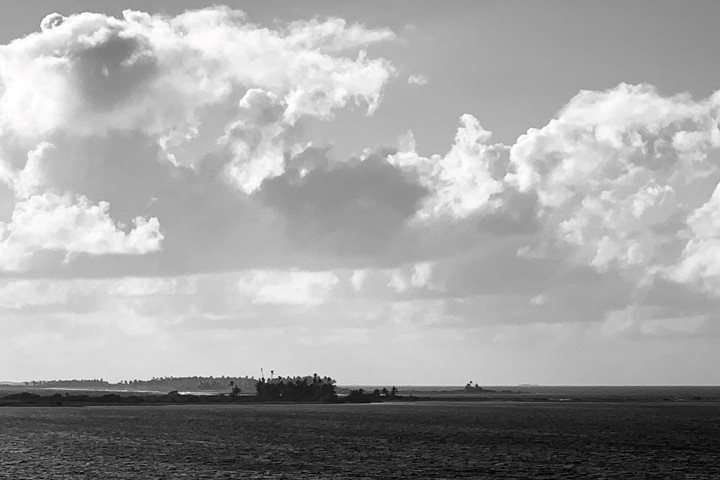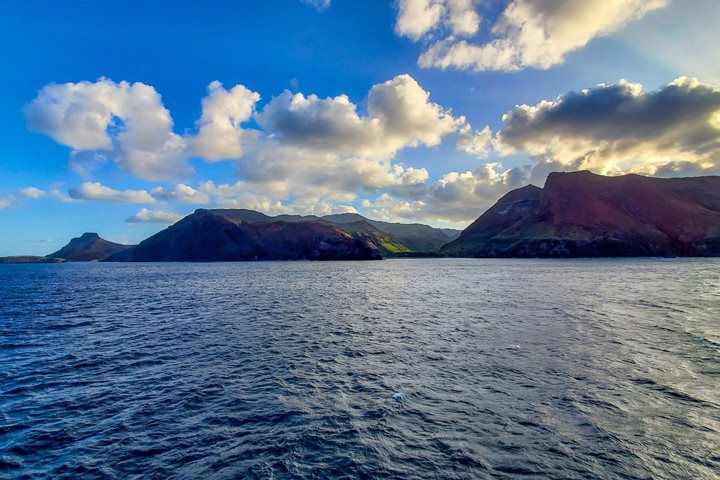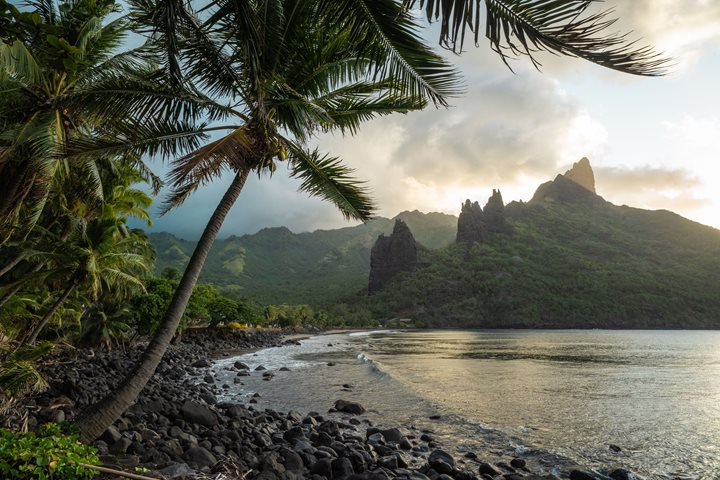Early this morning we arrived off Makatea Island, which is also known as AuroraIsland. It is officially considered part of the Tuamotu Archipelago, even though it is not an atoll like nearly all the other islands in this group. The island is actually a raised coral island, called makatea in the Polynesian language, and is very different from the typical low, sandy, coralline islands found in this region of French Polynesia. And, just to make things more confusing, Makatea Island is administered as part of the Windward group of the Society Islands, which includes Tahiti and Bora Bora.
Makatea Island is very important from a historic point of view, because the center of the island once contained a large deposit of phosphate that was produced millions of years ago when the surface of the island was still submerged. At that time, rich organic material decayed on its shallow reef through bacterial action, and in the process precipitated the phosphate. After the island was uplifted by way of more volcanic action near the sea floor, erosion concentrated the phosphate among various surface pockets within the exposed limestone. Starting in the 1920s, this valuable deposit of phosphate was mined jointly by the British and the French until 1966, when the phosphate reserves were depleted. Phosphate is processed to form phosphorus compounds that can be mixed with nitrogen and potassium (potash) to produce synthetic fertilizers. Nowadays, only about 50 people inhabit the island.
The island measures about 4.5 miles (7.5 km) north to south in length and rises up to 260 feet (80 m) in height above sea level with a spectacular vertical cliff around most of the island’s edge. The exposed rock represents hundreds of thousands or millions of years of coral growth that built up before the island was geologically uplifted on its volcanic core. Makatea Island has a fringing reef, which in addition to the cliffs, makes for a difficult access to the island. The mining interests constructed an artificial harbor on the northwestern coastline, where we were able to gain access to the shore in the early morning. Many of us walked up a steep hill to reach the top of the plateau and then continued three miles (~4.5 km) on a fairly flat road across almost the entire length of the island. Along the way, we found some of the remnants of the phosphate mining operations that took place those decades ago, including narrow-gauge rails, rusted out winches, gear systems, and a small locomotive.
Our trek took us through some short sections of forest habitat, but mostly we walked across a flat, pock-marked, exposed plateau environment that is mostly covered with scrubby pissonia trees, pandanus trees (also known as screwpalms), banyan trees, Polynesian plum trees, and endemic Tuamotu palms, as well as beautiful ground orchids, tiger claw lilies, rosy periwinkles, and many other flowering plants. The road way gave us an easy transit through a very treacherous and rugged limestone karst deposit. At a place called The Belvedere, we walked off the main road to an overlook for an amazing view of the cliffside and lower landforms. A little ways beyond that, we reached a picturesque grotto where many of us swam in cool, clear, fresh water. The ceiling overhead was festooned with stalactites, and many of us worked our way far back into an awesome hidden cave system. The bird watchers among us were especially happy to see some interesting birds on the island, including endemic Polynesian imperial pigeons, Makatea fruit-doves, and Tuamotu reed-warblers, as well as brown noddies, crested terns, white terns, red-footed boobies, and great and lesser frigate birds. Many of us walked the entire distance, whereas others accepted rides on trucks, which cut down on the necessary walking.
In the afternoon, we enjoyed water activities with SCUBA diving, snorkeling, and Zodiac cruises. The water was gin clear and the coral was very rich and healthy-looking. Most of the fish life in the shallows, which endured significant swells breaking over the reef flat, was composed of small creatures, but when snorkelers ventured out over the dropoff and looked out to sea, numerous larger fish were in evidence, including a massive school of Pacific schooling barracuda. Several of us opted to explore the coastline with Zodiacs and were rewarded with impressive closer views of the cliff line and huge caves studded with hanging stalactites and immense stalactite/stalagmite columns. It was a very satisfying day.









